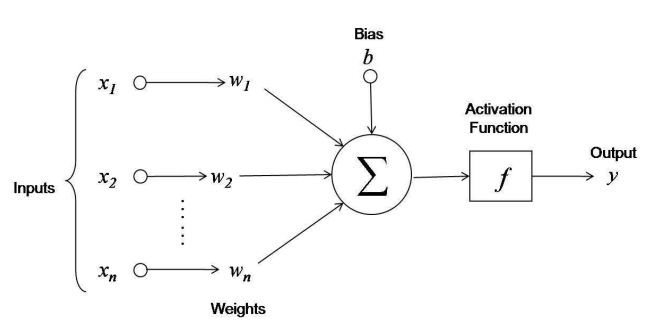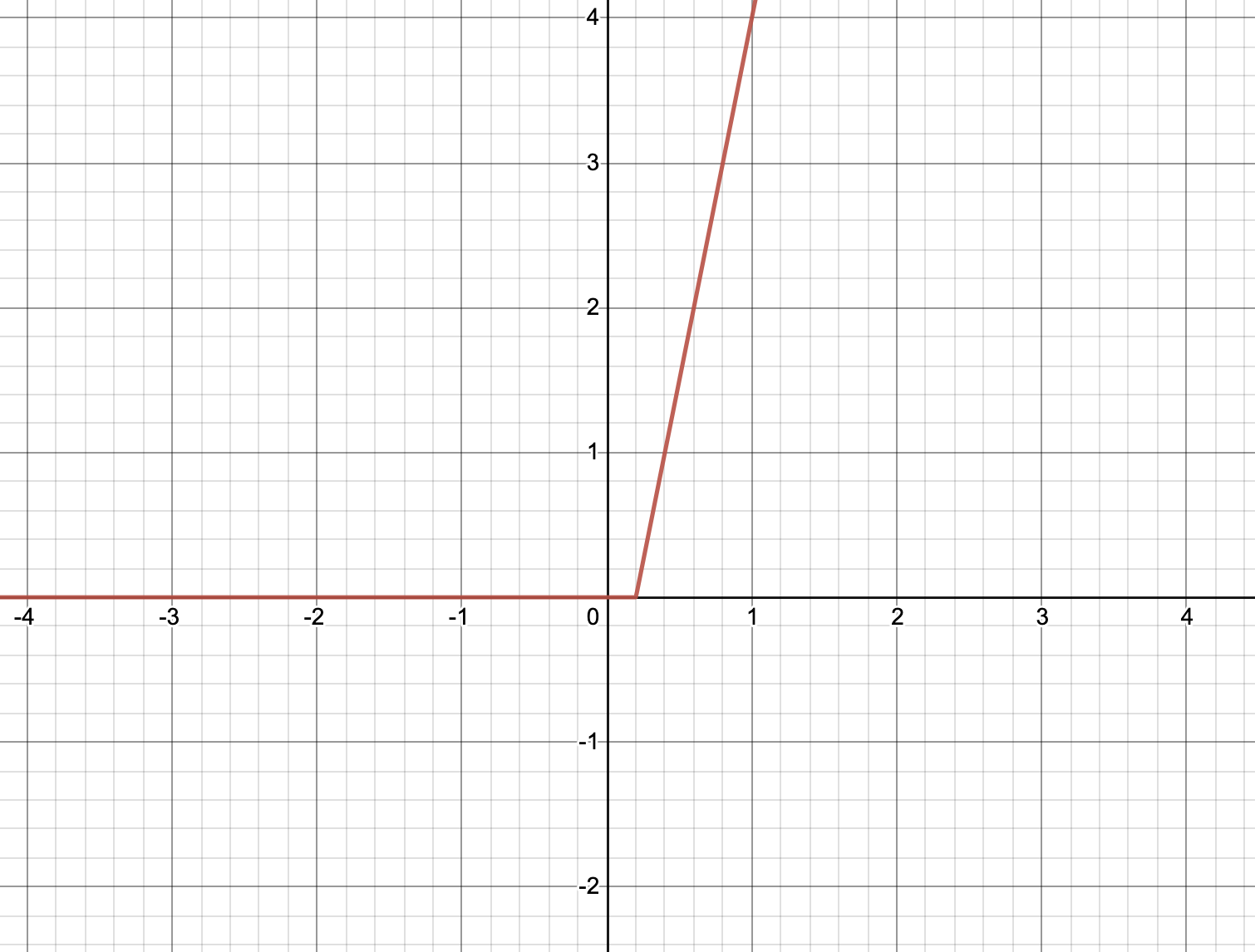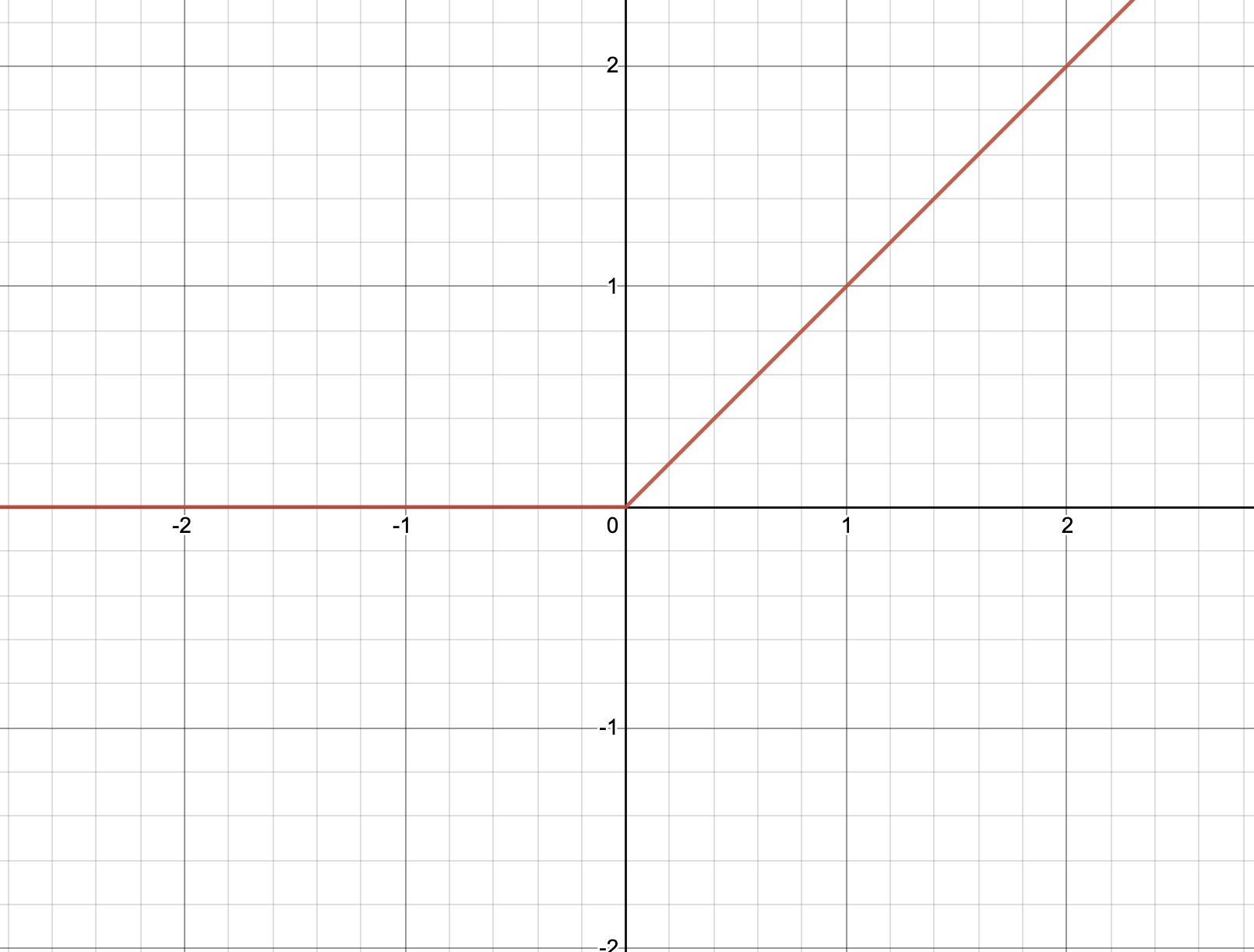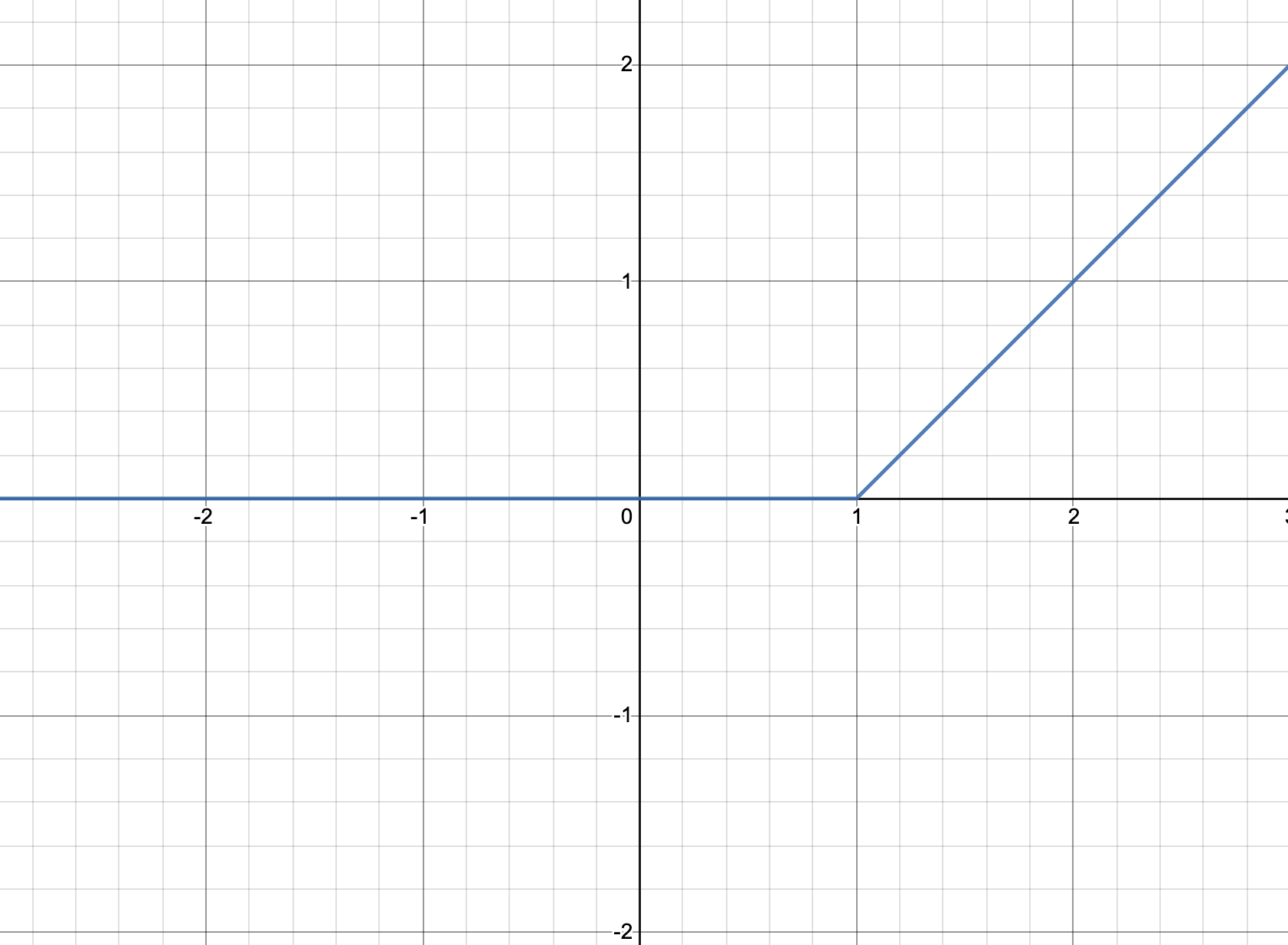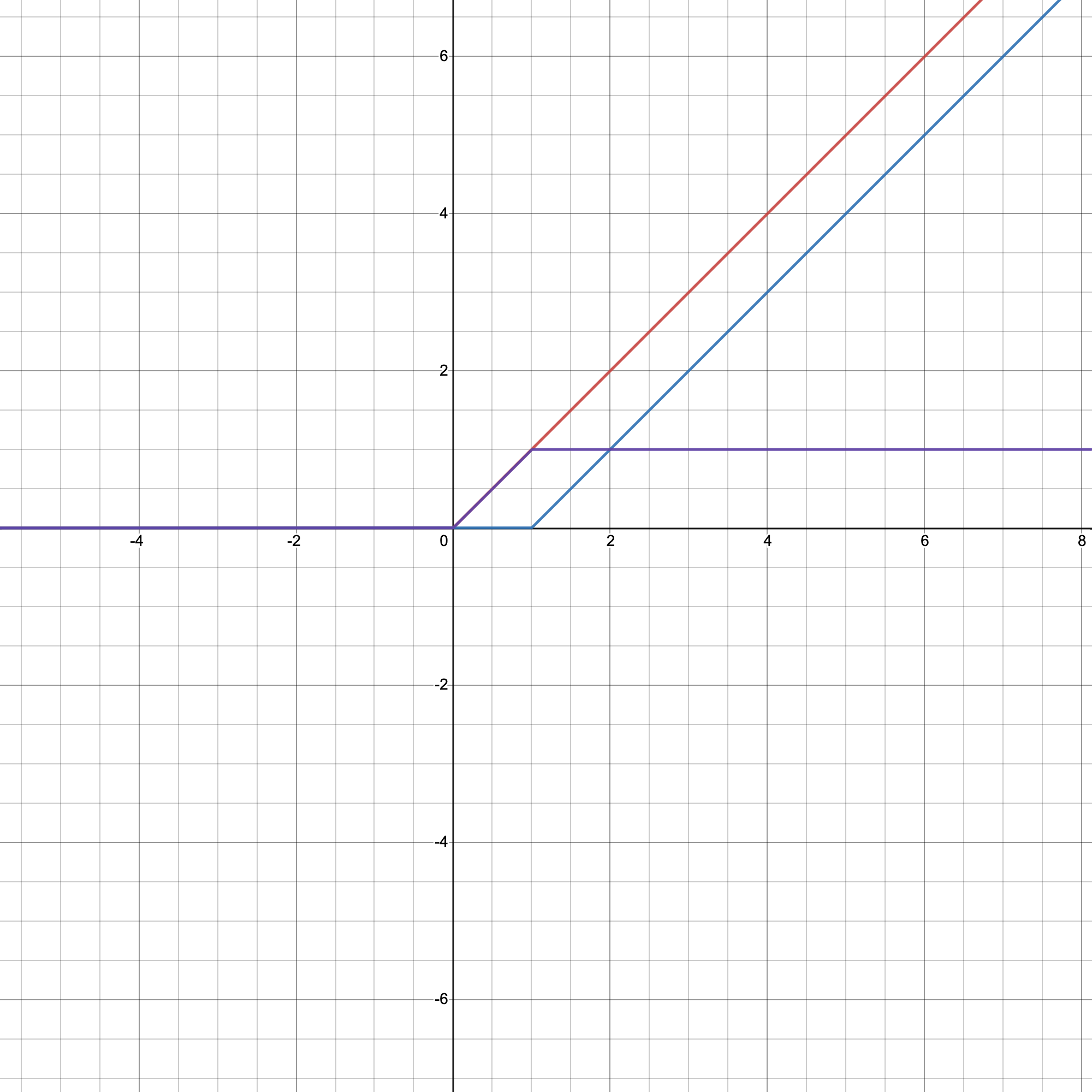(Migrated from old blog)
Recently, I attended a course on Deep Learning and found this very nice intuition for how the Universal Approximation Theorem works.
What is Universal Approximation Theorem?
Universal Approximation Theorem states that a neural network with a single hidden layer and finite number of neurons can approximate any continuous functions in $ \mathbb{R} ^n$ (under mild conditions).
Quick revision of a neuron in a neural network
It takes a vector of input $ x_i $ multiplies it with weights $ W $ adds a bias $ b $ and applies a non linearity $ g\left( \cdot\right) $ and gives an output $ a_i $.
Basically,
\[\begin{align*} z_i &= W_i \cdot x_i + b \\ a_i &= g(z_i) \end{align*}\]where $ g(x) $ is the activation function. For our use we will be using a Rectified Linear Unit or ReLU activation function which is defined as
\[z = \mathbf{ReLU}(x) = \max(0, x)\]and its derivative is
\[f(x)= \begin{cases} 0 & \text{if } x < 0 \\ 1 & \text{if } x >= 0 \\ \end{cases}\]ReLU has lot of benefits but we will not be discussing about it rather we will try to approximate some functions with its help.
Lets plot a simple neuron with ReLU activation we can say that
\[a = \max(w.x + b, 0)\]where w = 1 and b= 0 will look like
Images from desmos play around with them here
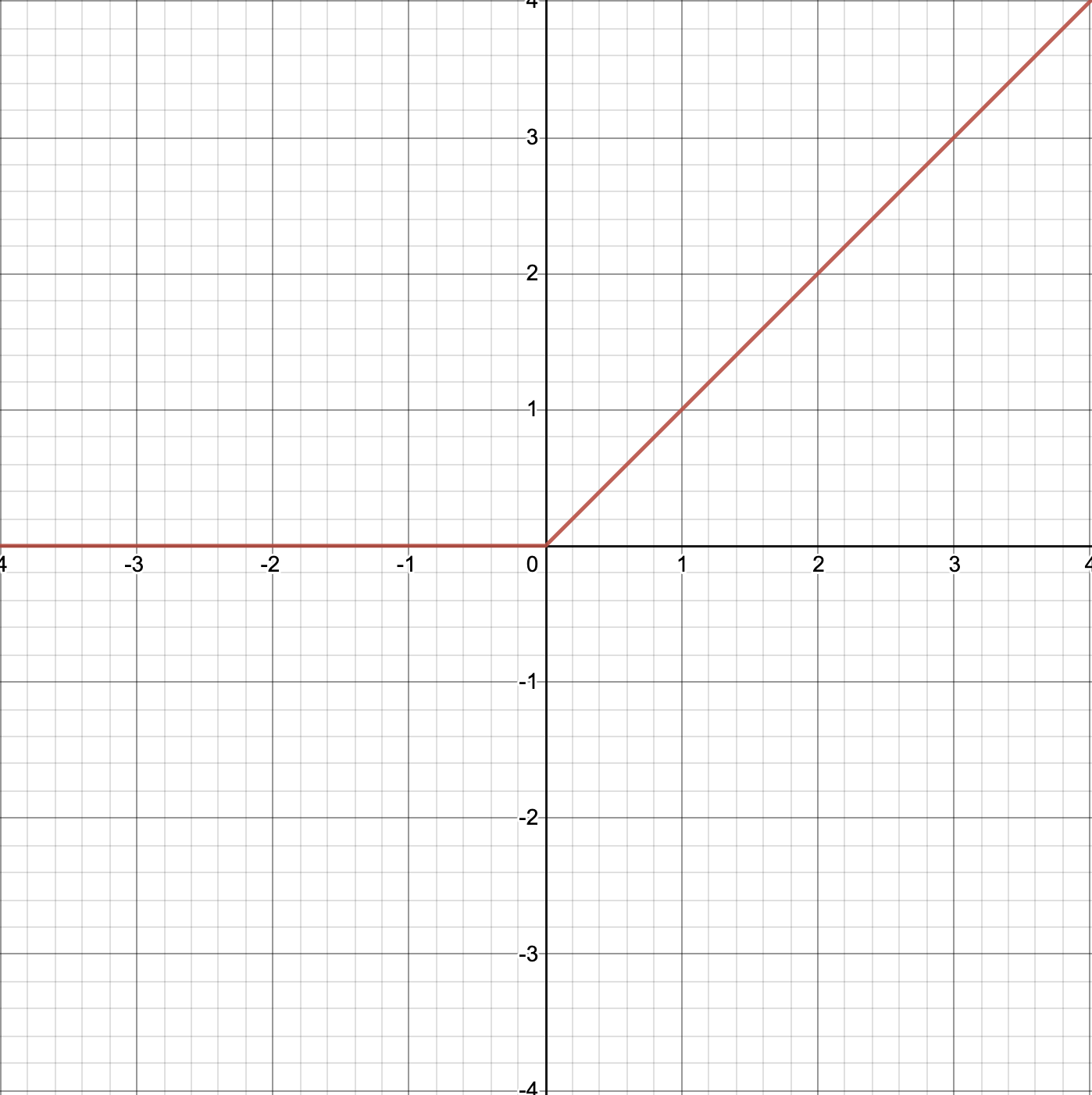 Rectified Linear Unit activation function or ReLU
Rectified Linear Unit activation function or ReLU
where w = 5 and b = -1 we will get the graph as
So, we can make lot of straight with different slopes and biases lines with just a single neuron with ReLU activation.
Objective Function
Now let’s try to create a complex function that will require more than one neuron, a function that looks like this
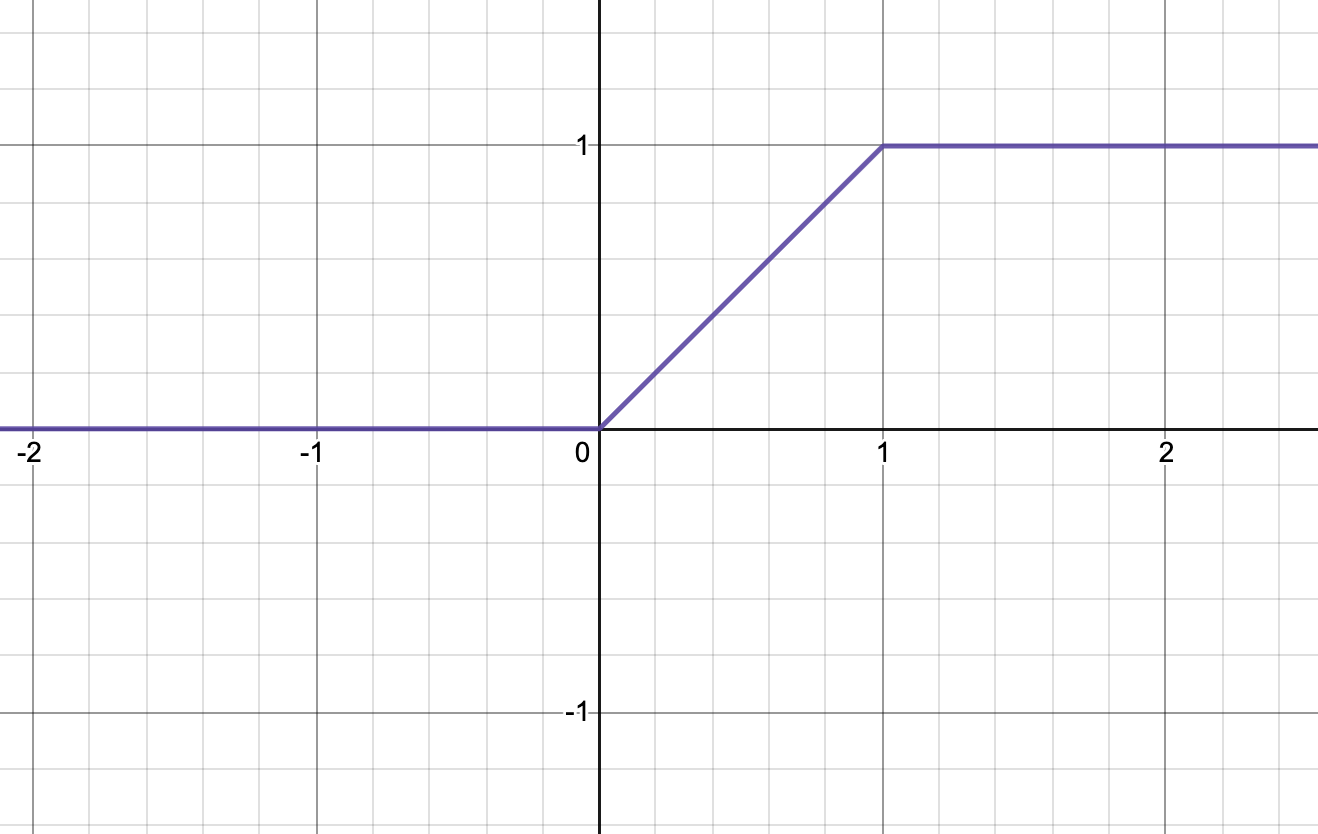 Objective function with multiple neurons
Objective function with multiple neurons
So now, we cannot model with objective function with a single neuron rather we will stack two neurons vertically basically something like this
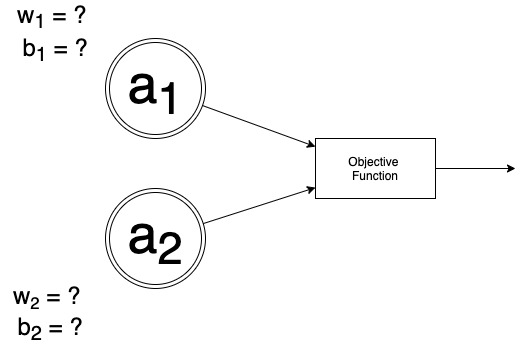 Find out parameters to this Neural Network
Find out parameters to this Neural Network
where $ a_i $ is the activations of the $ \text{neuron}_i $
Spend some time on desmos link before looking at the answer you will figure it out yourself: https://www.desmos.com/calculator/nfx8gtciyy
Solution
\[a_1 = ReLU\left(w_1 \cdot x + b_1\right)\]where $ w_1 = 1 \ \text{and} \ b_1 = 0 $
w = 1 and b = 0
and
\[a_2 = ReLU\left(w_2 \cdot x + b_2\right)\]where $ w_2 = 1 \ \text{and} \ b_2 = -1 $
Now we take the difference of these two activations i.e
\[f(x) = a_1 - a_2\]and we model our objective function look at this plot and in desmos to play around this approximation. https://www.desmos.com/calculator/fiblrs3lnm
Similarly, by combining many networks in parallel like this, we can model any piecewise constant function and this family is rich enough to approximate any continuous function.
Thus, showing us how the Universal Approximation Theorem works intuitively.
I learned this intuition from Lennart Svensson and Jakob Lindqvist, Department of Electrical Engineering, Chalmers University of Technology, Sweden

